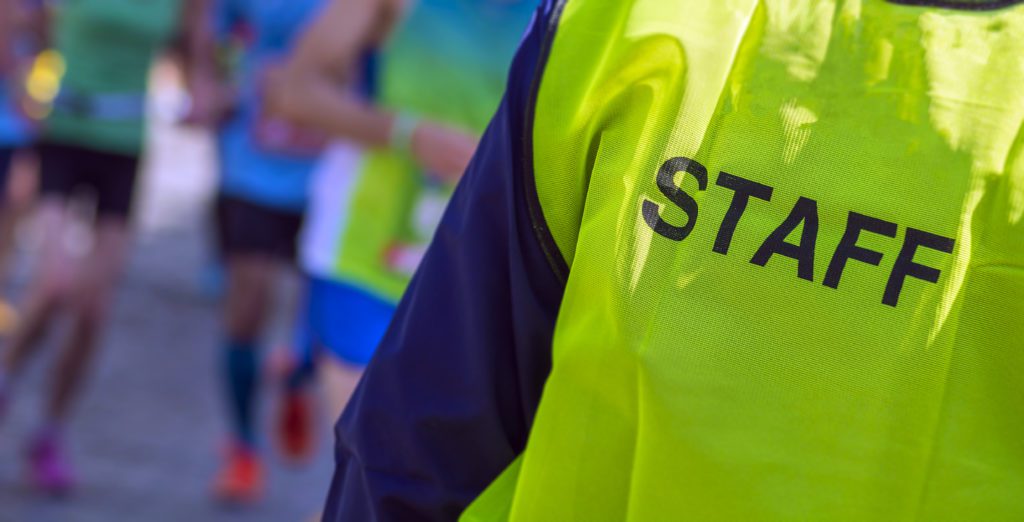
A good accreditation system is very important before and during an event. Both partners, sponsors and volunteers are completely dependent on everything about accreditation being correct. In the opposite case, poor handling can affect both the turnover and the relationship with the mentioned partners. Here you get to know a little more about what a good accreditation system should be able to handle.
Accreditation is a field, and it can take many years to build up good competence in the area. It is important to start with a good one accreditation matrix, with people belonging to different categories, levels they should have access to, any benefits / profiling articles, what times they should have access, etc.
Important help
A good accreditation system should ensure that you can easily handle zones, bracelets, food stamps, profile items and other things that are to be distributed to guests, officials, sponsors, etc.
Everything must be easy to systematize in the accreditation system and the possibilities for systems are many. It is critical to have steel control over who should have what, and who has received what.
Mistakes can be costly
For example, when handing out sponsor tickets, you must know who will have them, when and where they will be picked up, when they were picked up, whether they have not been picked up and who has handed them out. It is important to have control over this, because if the wrong people get a sponsor ticket and you have to give out extra tickets to those who really should have, this can go far beyond the finances of the event.
At large events, there can be tens of thousands of different objects to be distributed to several thousand people, and then you MUST have a good and clear system.
Systematic distribution
In a sensible accreditation system, objects can be linked to categories / groups. As a trail guard, you may have to wear a yellow vest, walkie-talkie, take out a soda and some food in the kiosk, etc. When the volunteers have got the job, they should have access to this, but only when they are actually going on duty.
Maybe it's the case that a child can participate for free if one parent takes a volunteer shift, and then one right must automatically trigger another. The accreditation system must keep track of this when the matrix is in place.
Proper access
It is critical that everyone has access to zones they should have access to, and don't to places they absolutely should not be. One should be able to divide the event into different zones and control this through the system. It is therefore advisable to spend a lot of time setting up the accreditation matrix, so that this is exactly right.
We are happy to divide into two sections:
- External accreditations, such as the press, suppliers, sponsors, athletes, etc. A separate application form is set up here. The press should naturally have access to other zones than e.g. a sponsor.
- Internal accreditations, as volunteers, group leaders and event administration. If you are approved as a trail guard, you get automatic access where trail guards are to travel and be placed. In addition, you may be entitled to goods such as food, a ticket for the family and clothing.
The important cards
Most good accreditation systems have a solution for uploading a separate design on the front and back of the accreditation cards, with their own logo, sponsor logos, possibly program etc. You then place the necessary information fields, such as date, name, position / role (press, performer, management, sponsor etc.), zone access etc. When everything is set up, it should be easy to merge this into the database and generate the cards as PDFs. Then the PDF files should be able to be printed directly, or sent directly to the printing company.
It can also be advantageously applied to a color stripe for classification, which e.g. everyone in the press has a green stripe across the card, so it's even faster to see who should have access to what. It should also be possible to enter a QR code that can be used for scanning at the entrance, food voucher control, check-in at the workstation or other.
There is a sea of possibilities for layout, but it is important to remember that the card must be easy to read at a distance. It provides faster handling, helps prevent queues and provides a much better experience for visitors. Remember that cows are the organizers' worst enemy!
Let people do the work themselves
It is very common to have a desk with a number of people who enter and manage all of the accreditations. These send out information about what accreditations have been given, where you can get cards, etc. With a good system, you can limit the need for personnel significantly, by letting people do much of the work themselves. If everyone has access to "My page", they can enter the required info themselves, directly into the system.
Full control
Accreditation can quickly become complete chaos, so one must have a system that provides control, agility and shows professionalism. It should also be quick and easy to find out who is denied accreditation. Unfortunately, it happens that some do not prove worthy of trust, and then these should be able to be deprived of rights for a limited period, or permanently.
Flexibility and security
Typical of many accreditation systems is that they are very rigid, they only print access cards or only keep track of categories and levels. In the best systems, you can also control all of the accesses, which provides a much more secure solution. Who has picked up and who has not picked up their card? Everyone must have accreditation to be able to be at work, and you thus also have a full overview of who don't have been at work. This makes it easy to set up accounts against a budget, by looking at hours, and by setting an "hourly rate" / value for the volunteers.
If a volunteer has not met at work, but has obtained accreditation, he or she should receive an invoice. They have then not followed the agreement that came with the accreditation. This provides better financial security for the organizer.
Based on the accreditation lists, shift lists and check-in at the workstation, you can see who has been and has not been to work. By scanning QR codes, you can quickly get an overview of everyone who is NOT where they should be, when they should have been there. This provides a double securing of the rosters.
Security for the organizer
If someone is to work as a security guard, it may be required that no one is under 18 years of age. The system must have an overview of this from the registration, and ensure that people under the age of 18 are not offered this type of job.
Organizers must at all times follow current GDPR regulations. The best systems are continuously updated in accordance with current rules, so that the organizer does not have to worry about whether things are done legally or not.
Easy communication
Organizers must at all times follow current GDPR regulations. The best systems are continuously updated in accordance with current rules, so that the organizer does not have to worry about whether things are done legally or not.
A good system provides order and flow in the crowds, so the organizer and the event are perceived professionally. It gives control to know who has done what, where and when. Or knowing how many people will pick up the t-shirt today, and how many people will pick up tomorrow.
All officials should be able to communicate easily with. It is also a great advantage if you can follow up with SMS (or email) directly from the solution, such as. «Hi, Frode Officer! You have a guard at track point 3 in 10 minutes. Are you ready?".
Something very complicated made easy
A good accreditation system must be a complete logistics solution for all human resources, both personnel who will work and other visitors who will have accreditation. The system should take care of everyone except the audience, which is often handled through a ticket system. Accreditation is a complex and advanced exercise, but becomes very simple with a good system.



